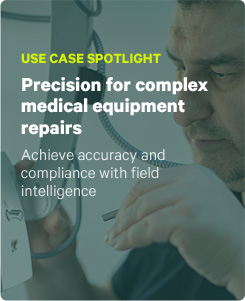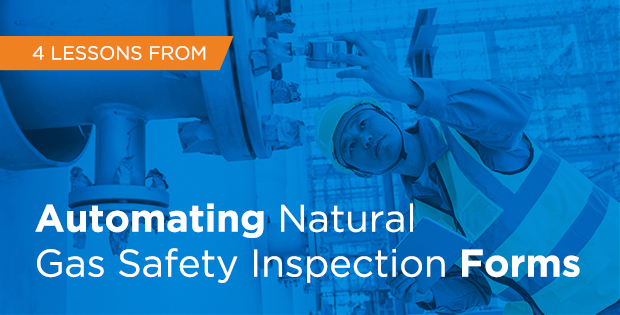In a recent statistic from Fortune Business Insights, the oilfield services market will reach $346.45 billion by 2027. One example of a company looking to capitalize on this growth is a floating liquid natural gas facility (FLNG) belonging to a global 500 company looking to automate its natural gas safety inspection forms.
ProntoForms (now TrueContext) recently helped streamline its success, improving operational agility, reducing costs, increasing engineer productivity, and improving organizational visibility. By partnering with us, the facility achieved a return on investment of 332% with a payback period of 4.8 months.
Join us in this blog as we explore the valuable insights gained from a real-world example of transforming safety inspections for the oil and gas industry, which can apply to any service organization seeking to boost their field service practices.
Modernizing natural gas safety inspection forms: ditch the old way
Initially, the FLNG used an outdated system with paper-based natural gas safety inspection forms for its safety inspections. This caused problems with project visibility, tracking, and analytical capabilities.
Manual inspections made the form submission process longer and more complicated. As a result, employees often faced work stoppages and had to redo certain parts because of human error. A safety engineer also had to travel to the facility by helicopter each time, adding unnecessary expenses.
If this resonates with you, consider switching to a modern form management platform—especially if you need help with visibility, tracking, and analytics.
Clearly define your needs beforehand
With the FLNG, they needed a new management platform for their natural gas safety inspection forms that would provide cost-effectiveness, ease of use, and data consolidation. Although they considered expanding their investments into the original system, they considered ProntoForms (now TrueContext) because of the following two main reasons:
- It was easier to use: The FLNG wanted a natural gas safety inspection form management solution that was easy for non-technical users. Using this approach, they avoided professional service fees and allowed their teams to address their own form needs.
- It improved data management and analysis: The facility needed faster data collection and analysis. They needed a system to store all form data in one place and an easy way to submit it without manually entering it.
Identifying your needs before looking for a potential solution is crucial. Whether you want to improve the form experience for your engineers or optimize how you use data for stakeholders, being clear on your needs will put you on the right path toward success.
Establish what success means to you
In January 2021, the FLNG started making its first forms. Within two months, they created their first natural gas safety inspection — all spearheaded by just one internal Digitalization Specialist who didn’t have a technical coding background.
Although this was a big win, the facility didn’t stop there:
- They reduced operational expenses: FLNG engineers performed tablet inspections to minimize travel expenses and uploaded the data to off-site engineers. They removed their reliance on third-party services by gathering and feeding their data into a more expansive database.
- They improved employee productivity: Using tablets, FLNG engineers avoided rework, saving time by managing and navigating forms more effectively. This saved the facility around 3000 hours annually, which it reallocated to production. Form users could now also take photos or videos of issues on site and submit them to the system with their natural gas safety inspection forms, allowing for a more efficient crowd-sourced safety reporting process.
- They improved organizational visibility. The facility’s management gained real-time insight into form submission progress through the process with a comprehensive overview of completed and outstanding tasks. Through a centralized database, they analyzed collected data and generated insights into past inspection performance. Thanks to the search engine and Power BI functionality, they could also study trends and refine processes.
Here, setting clear goals and measuring success is crucial. Whether you measure qualitatively or quantitatively, being precise will significantly help you speed up the process by avoiding ambiguity.
The improvement process doesn’t stop once the natural gas safety inspection forms are finished
Today, the FLNG is still evolving as an organization, deciding to concentrate on safety. As a focus area, they’ve measured the number of relief boats they can support. With a renewed ability to generate insight, they expect an even greater return on their investment. Completing any project is an important milestone, but it’s never the end. While you may want to stop and celebrate the accomplishment, keep the momentum going.
Conclusion
Digital transformation efforts are often large, challenging, and complex, costing many resources. For the FLNG facility, however, the many benefits of automating their natural gas safety inspection forms meant operational agility, reduced costs, and increased engineer productivity made it all worthwhile.
When embarking on your journey, you must consider where you are and where you want to be. Consider what you need and how you’ll measure success. If you want to start your digital transformation process, contact us today to schedule a demo! Our team is here to support you every step of the way.




